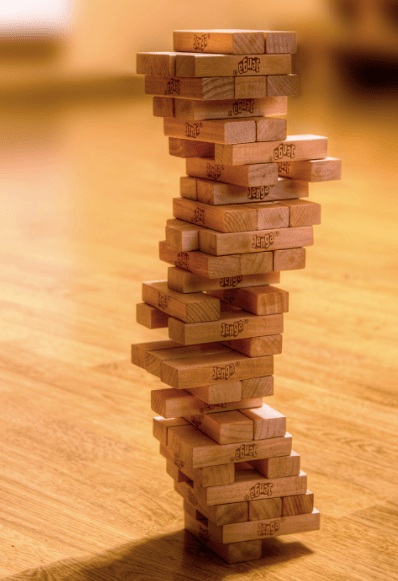BMC Part Eight: Key Partners
(If you’re using the Canvas, you’ll love my free Business Modelling eBook, full of tips for inventing and testing ideas that will change the world)
Your business has some friends – groups who take some weight off your shoulders.
These are individuals or organisations who enable your organisation to run smoothly, enabling you to focus on what’s most important.
Your idea sits in a value chain – the complete process by which a product or service is made and delivered.
There’s a good chance that you don’t do everything yourself; someone either sits before you or after you, and we need to keep them happy.
For example, someone else might create the raw ingredients that your company combines into something special.
Maybe you’re borrowing some retail space from a larger organisation, or you’re stocking your product in other people’s stores.
Perhaps you have people who refer you a lot of customers, or have an advertising platform that helps people discover your business.
Maybe you require permission from a regulator, someone who isn’t paying you but who can make your life miserable if they get upset.
Partners are great.
A good partnership can transform your sales – by either increasing your traffic, or doing something better than you could do it yourself.
- 7 Eleven slurpees are “Powered by Coca Cola” rather than creating their own cola flavour
- Intel are specialists, so most computer companies use them as a supplier of microprocessors
- Most cafés don’t roast their own coffee, so form partnerships with large (or artisan) brands
- Aid organisations in the developing world rely on local government partnerships in order to continue to operate.
Upsetting the government is a huge risk to their survival
- Thank You stock their water and bars in major supermarkets, trading some margin in exchange for massive exposure
Image Credit: Gelato Messina
There’s a catch; partners can’t be controlled like our resources can, so they require deliberate attention and management.
Failure to do so can result in a competitor locking up an exclusive deal, or worse – your partner becomes your competitor.
The deal needs to be win-win, and we need to be clear on what’s in it for the other party.
Partnerships are about specialisation.
That’s the decision to funnel your energy and expertise towards your strengths, and outsourcing your weaknesses to others.
These arrangements allow you to swap fixed costs for variable costs – buying only a finished product, rather than paying for all the research, development, machinery, etc.
Image Credit: Woolworths
This prompts the question:
What business are you in?
Understanding your business allows you to make good decisions about where to double your efforts, and where to cut your losses and form a partnership.
It’s why two companies in the same industry can be in very different businesses.
Think of Netflix focusing on content creation, Amazon moving into retail, or Facebook constantly changing its features.
They’re not focused on incrementally refining their craft, but instead are obsessed with serving their customer – and are willing to form creative partnerships to make people happy.
The way to fill in this box is to track the external people who have been mentioned in the other boxes – such as suppliers, stockists, donors, supporters, regulators, channels etc.
Then we have two points of innovation: Creating possibilities, and eliminating dependencies.
Creating opportunities is exploring the “What If?” questions:
What if we found a partner who could manufacture core resources for cheaper than we can do it ourselves?
Who else could stock our products?
What other services could benefit from integrating what we do?
How can we use our spare capacity to solve problems for other companies?
Whose brand could we leverage to build our credibility?
What services will other businesses require in the future that don’t exist today?
Dependencies are dangerous, because they present significant risk.
If we have a key partner who could sink our business with a single decision, then we either need to find a backup or create a retention strategy.
By identifying these dependencies early, we can find ways of defending against disaster.
Four questions for your business
· What business are we in?
· Who has a speciality we can leverage?
· What partnerships would be valuable in the future?
· Where are we overly dependent on a partner?
Now we're on to Viability, starting with Cost Structure...
This is a multi-part series on the Business Model Canvas.
If you’d like to jump straight to a particular section, go to:
Overview: How To Use The Business Model Canvas
Desirability: Customer Segments, Value Proposition, Customer Relationships, Channels
Feasibility: Key Resources, Key Activities, Key Partners
Viability: Cost Structure, Revenue Streams
Then once you've made your first canvas:
Reviewing: After Your First Model, Alarm Bells
Reinventing: Testing, What If?
Improving: Metrics, The Business Model Environment
Extensions: Pitching, Social Impact, Making It Great, What Next?












